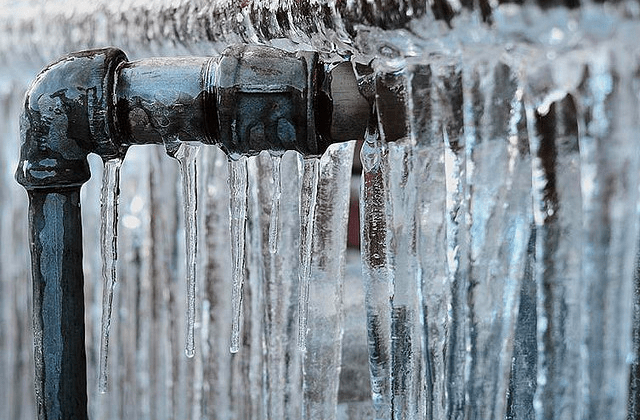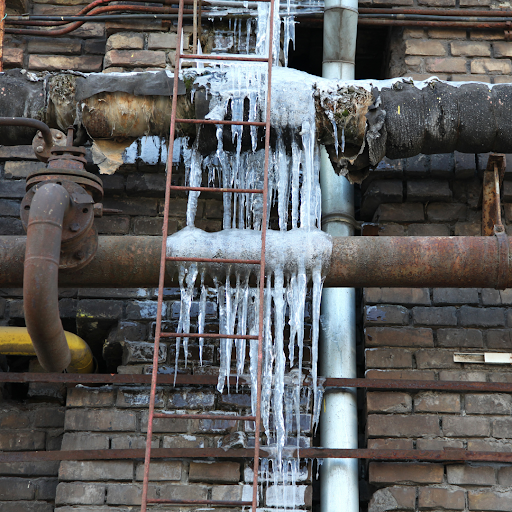Essential Tips to Protect Against Frozen Plumbing in Winter
Essential Tips to Protect Against Frozen Plumbing in Winter
Blog Article
The article listed below about 6 Ways to Prevent Frozen Pipes is exceptionally fascinating. Read on and draw your own final thoughts.

Winter can wreak havoc on your plumbing, especially by freezing pipes. Right here's exactly how to avoid it from taking place and what to do if it does.
Intro
As temperature levels decline, the threat of icy pipelines boosts, possibly causing expensive repair work and water damage. Understanding how to stop frozen pipelines is crucial for property owners in chilly environments.
Understanding Frozen Pipes
What triggers pipes to freeze?
Pipelines ice up when exposed to temperatures listed below 32 ° F (0 ° C) for prolonged periods. As water inside the pipelines freezes, it increases, putting pressure on the pipeline walls and possibly causing them to rupture.
Risks and damages
Icy pipes can bring about water system disruptions, residential or commercial property damages, and pricey repair work. Ruptured pipelines can flooding homes and cause comprehensive architectural damages.
Indicators of Frozen Pipeline
Determining frozen pipes early can avoid them from rupturing.
Just how to recognize icy pipelines
Try to find lowered water circulation from taps, unusual odors or sounds from pipelines, and noticeable frost on revealed pipelines.
Prevention Tips
Insulating vulnerable pipelines
Cover pipes in insulation sleeves or use warmth tape to shield them from freezing temperature levels. Focus on pipelines in unheated or outside areas of the home.
Home heating methods
Maintain indoor spaces properly warmed, especially locations with plumbing. Open up cupboard doors to enable cozy air to circulate around pipelines under sinks.
Safeguarding Outdoor Pipes
Garden pipes and outdoor faucets
Separate and drain pipes garden tubes prior to winter. Set up frost-proof faucets or cover outdoor faucets with insulated caps.
What to Do If Your Pipelines Freeze
Immediate activities to take
If you think frozen pipes, maintain faucets available to alleviate stress as the ice thaws. Make use of a hairdryer or towels taken in warm water to thaw pipelines slowly.
Long-Term Solutions
Structural adjustments
Take into consideration rerouting pipelines far from exterior walls or unheated locations. Add extra insulation to attic rooms, cellars, and crawl spaces.
Updating insulation
Buy high-grade insulation for pipelines, attics, and walls. Proper insulation aids preserve consistent temperature levels and decreases the threat of frozen pipes.
Conclusion
Avoiding icy pipelines calls for aggressive actions and fast reactions. By comprehending the causes, signs, and preventive measures, homeowners can shield their pipes during cold weather.
5 Ways to Prevent Frozen Pipes
Drain Outdoor Faucets and Disconnect Hoses
First, close the shut-off valve that controls the flow of water in the pipe to your outdoor faucet. Then, head outside to disconnect and drain your hose and open the outdoor faucet to allow the water to completely drain out of the line. Turn off the faucet when done. Finally, head back to the shut-off valve and drain the remaining water inside the pipe into a bucket or container. Additionally, if you have a home irrigation system, you should consider hiring an expert to clear the system of water each year.
Insulate Pipes
One of the best and most cost-effective methods for preventing frozen water pipes is to wrap your pipes with insulation. This is especially important for areas in your home that aren’t exposed to heat, such as an attic. We suggest using foam sleeves, which can typically be found at your local hardware store.
Keep Heat Running at 65
Your pipes are located inside your walls, and the temperature there is much colder than the rest of the house. To prevent your pipes from freezing, The Insurance Information Institute suggests that you keep your home heated to at least 65 degrees, even when traveling. You may want to invest in smart devices that can keep an eye on the temperature in your home while you’re away.
Leave Water Dripping
Moving water — even a small trickle — can prevent ice from forming inside your pipes. When freezing temps are imminent, start a drip of water from all faucets that serve exposed pipes. Leaving a few faucets running will also help relieve pressure inside the pipes and help prevent a rupture if the water inside freezes.
Open Cupboard Doors
Warm your kitchen and bathroom pipes by opening cupboards and vanities. You should also leave your interior doors ajar to help warm air circulate evenly throughout your home.

I'm just very involved in Preventing and dealing with frozen pipes and I'm hoping you liked the entire entry. If you liked our article kindly do not forget to pass it around. Thanks so much for taking the time to read it.
Book A Free Estimate Report this page